Shahnama: 1000 Years of the Persian Book of Kings
Nov 05, 2010 Exhibition
This exhibition celebrates the millennium of the poet Firdawsi’s Shahnama (Book of Kings), considered one of the greatest literary works ever written. Composed in more than 50,000 couplets, the epic retells the story of Iran from the beginning of time to the conquest of Islam in the 7th century. The Shahnama’s sweeping narrative and colorful mix of myth and history have inspired some of the world’s most remarkable manuscript paintings, several of which are on view. Created between the 14th and 16th centuries, these illustrations convey the visual power of Firdawsi’s words. The exhibition is organized by the Arthur M. Sackler Gallery with support from The Lee and Juliet Folger Fund.
 Feridun Strikes Zahakwith the Ox-headed Mace, from a Shahnama (Book of Kings) by Firdawsi (d.1020), Tabriz, Iran. Safavid period, circa 1525. Opaque watercolor, ink and gold on paper. Freer Gallery of Art Purchase F1996.2
Feridun Strikes Zahakwith the Ox-headed Mace, from a Shahnama (Book of Kings) by Firdawsi (d.1020), Tabriz, Iran. Safavid period, circa 1525. Opaque watercolor, ink and gold on paper. Freer Gallery of Art Purchase F1996.2
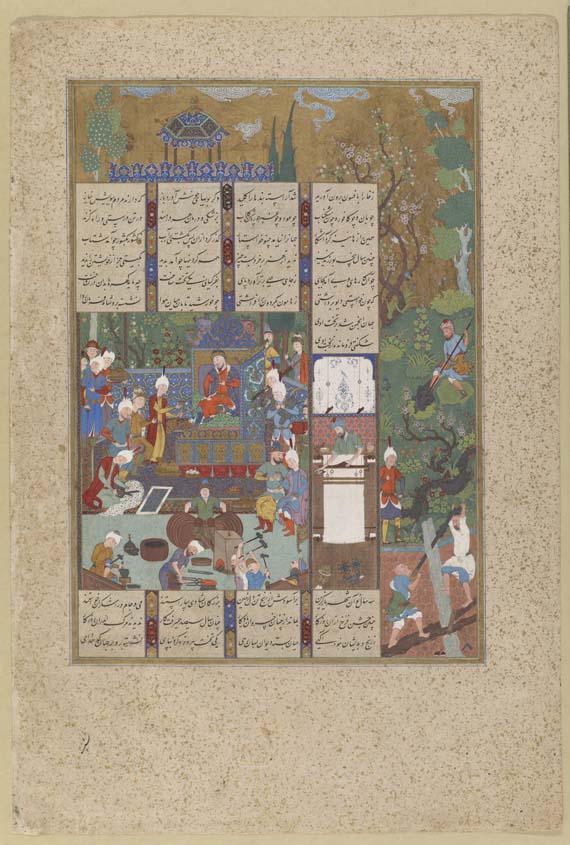 The Court of Jamshid, from a Shahnama (Book of Kings) by Firdawsi (d.1020), Tabriz, Iran. 1520s. Opaque watercolor, gold and ink on paper / Ebrahimi Family Collection, ELS2010.7.1
The Court of Jamshid, from a Shahnama (Book of Kings) by Firdawsi (d.1020), Tabriz, Iran. 1520s. Opaque watercolor, gold and ink on paper / Ebrahimi Family Collection, ELS2010.7.1
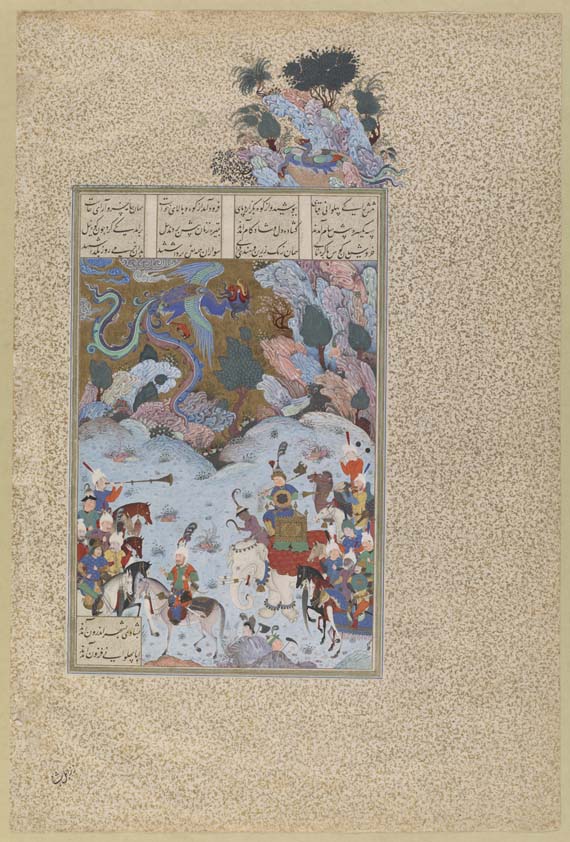 Sam Returns With His Son Zal, from a Shahnama (Book of Kings) by Firdawsi (d.1020), Tabriz, Iran. 1520s. Opaque watercolor, gold and ink on paper / Ebrahimi Family Collection, ELS2010.7.2
Sam Returns With His Son Zal, from a Shahnama (Book of Kings) by Firdawsi (d.1020), Tabriz, Iran. 1520s. Opaque watercolor, gold and ink on paper / Ebrahimi Family Collection, ELS2010.7.2
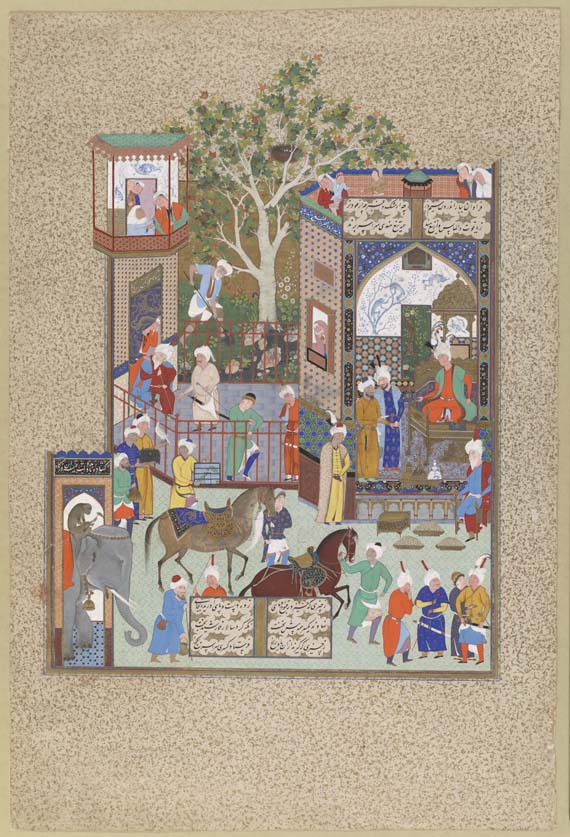 Nurshivan Receives an Embassy from the Ray of Hind, from a Shahnama (Book of Kings) by Firdawsi (d.1020), Tabriz, Iran. 1520s. Opaque watercolor, gold and ink on paper / Ebrahimi Family Collection, ELS2010.7.3
Nurshivan Receives an Embassy from the Ray of Hind, from a Shahnama (Book of Kings) by Firdawsi (d.1020), Tabriz, Iran. 1520s. Opaque watercolor, gold and ink on paper / Ebrahimi Family Collection, ELS2010.7.3
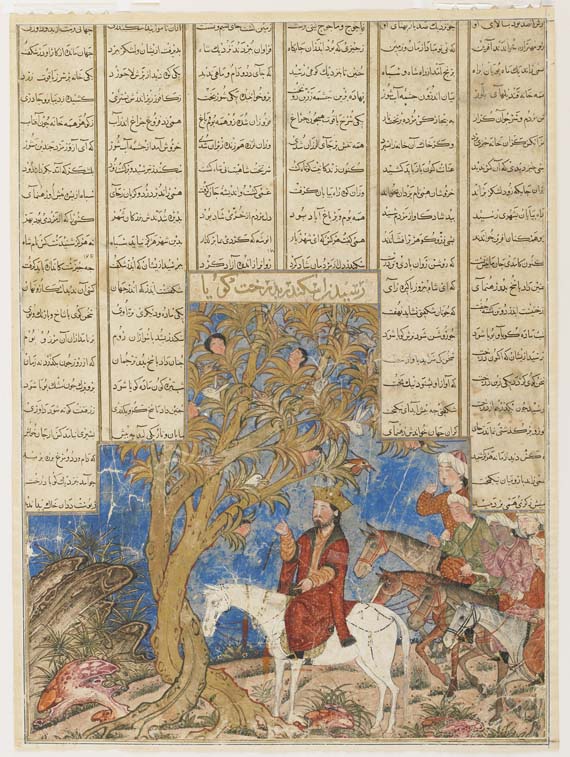 Iskandar (Alexander the Great) at the Talking Tree, from a Shahnama (Book of Kings) by Firdawsi (d.1020), Tabriz, Iran. Il-Khanid period, circa 1330-1336. Opaque watercolor, ink and gold on paper. Freer Gallery of Art, Purchase F1935.23
Iskandar (Alexander the Great) at the Talking Tree, from a Shahnama (Book of Kings) by Firdawsi (d.1020), Tabriz, Iran. Il-Khanid period, circa 1330-1336. Opaque watercolor, ink and gold on paper. Freer Gallery of Art, Purchase F1935.23
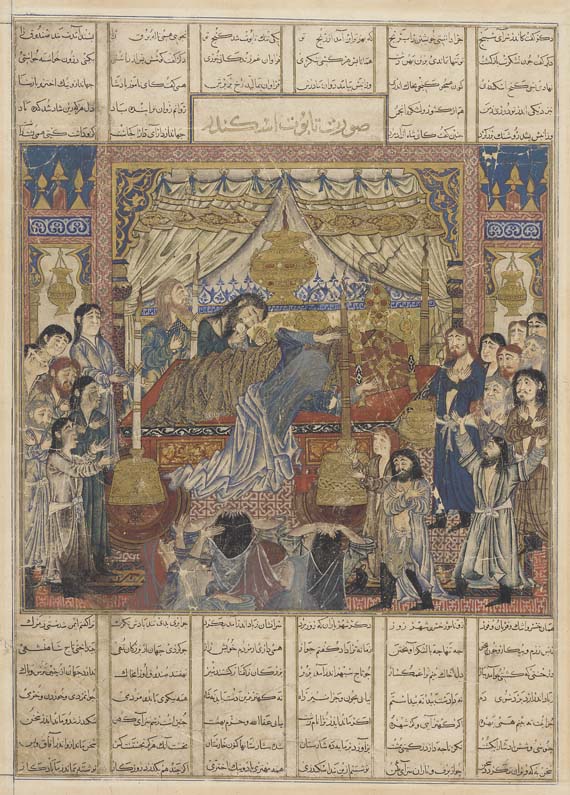 The Bier of Iskandar (Alexander the Great), from a Shahnama (Book of Kings) by Firdawsi (d.1020), Tabriz, Iran. Il-Khanid period, circa 1330-1336. Opaque watercolor, ink and gold on paper / Freer Gallery of Art, Purchase F1938.3
The Bier of Iskandar (Alexander the Great), from a Shahnama (Book of Kings) by Firdawsi (d.1020), Tabriz, Iran. Il-Khanid period, circa 1330-1336. Opaque watercolor, ink and gold on paper / Freer Gallery of Art, Purchase F1938.3
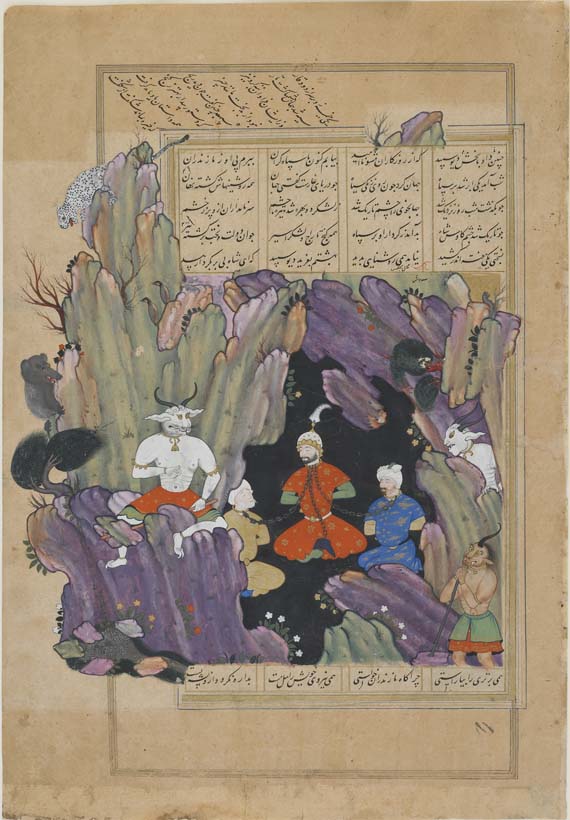 Kay Kavus Chained in a Grotto, from a Shahnama (Book of Kings) by Firdawsi (d.1020), Qazvin, Iran. Safavid period, 1576-1577. Opaque watercolor, ink and gold on paper / Purchase F2006.7, In appreciation of Mary Wilkie Ebrahimi and her exemplary service to the Galleries as vice chair of the Board of Trustees (2003-2007)
Kay Kavus Chained in a Grotto, from a Shahnama (Book of Kings) by Firdawsi (d.1020), Qazvin, Iran. Safavid period, 1576-1577. Opaque watercolor, ink and gold on paper / Purchase F2006.7, In appreciation of Mary Wilkie Ebrahimi and her exemplary service to the Galleries as vice chair of the Board of Trustees (2003-2007)
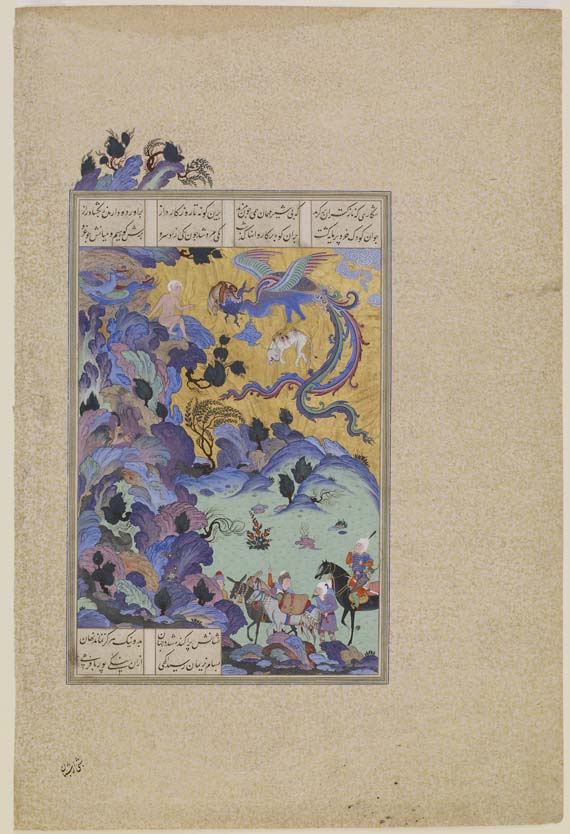 Zalis Sighted by a Caravan, from a Shahnama (Book of Kings) by Firdawsi (d.1020), Tabriz, Iran. Safavid period, circa 1525. Opaque watercolor, ink and gold on paper / Lent by the Art and History Collection. LTS1995.2.46
Zalis Sighted by a Caravan, from a Shahnama (Book of Kings) by Firdawsi (d.1020), Tabriz, Iran. Safavid period, circa 1525. Opaque watercolor, ink and gold on paper / Lent by the Art and History Collection. LTS1995.2.46
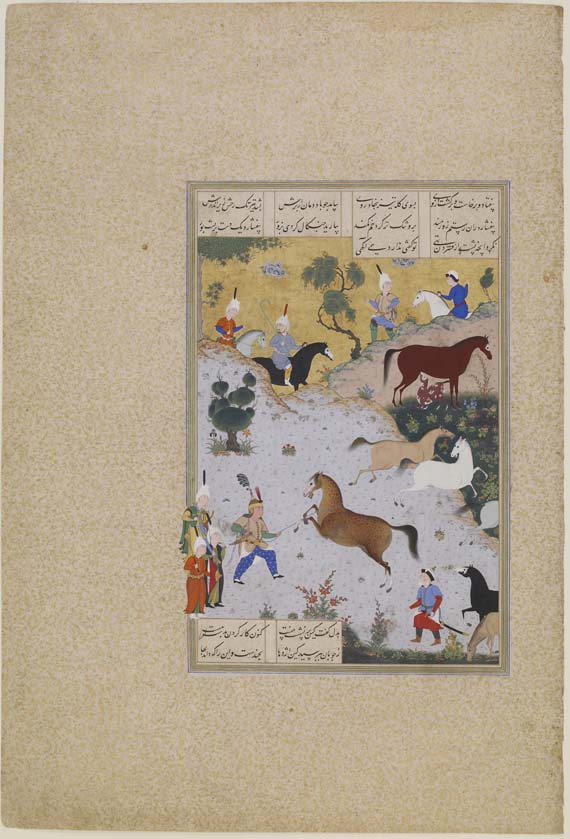 Rustam Lassoes Rakhsh, from a Shahnama (Book of Kings) by Firdawsi (d.1020), Tabriz, Iran. Safavid period, circa 1525. Opaque watercolor, ink and gold on paper / Lent by the Art and History Collection. LTS1995.2.47
Rustam Lassoes Rakhsh, from a Shahnama (Book of Kings) by Firdawsi (d.1020), Tabriz, Iran. Safavid period, circa 1525. Opaque watercolor, ink and gold on paper / Lent by the Art and History Collection. LTS1995.2.47
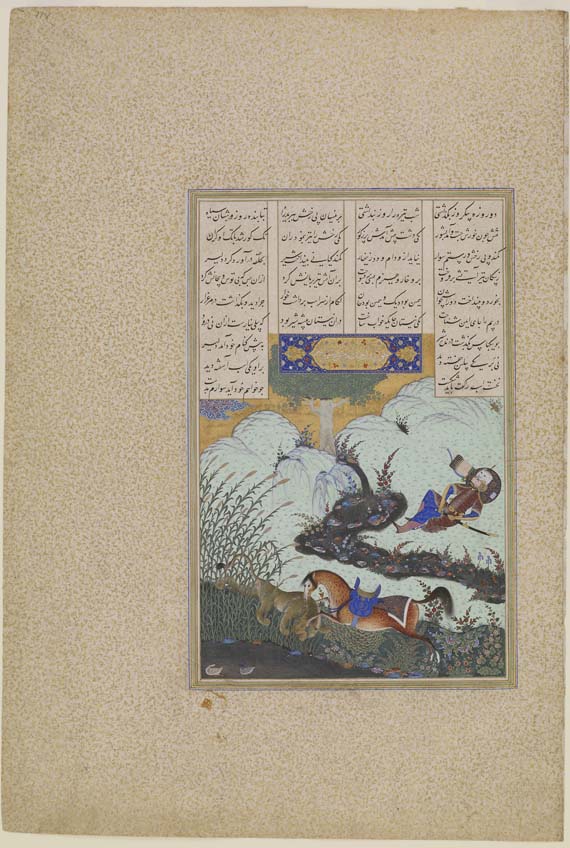 Rustam’s First Ordeal: Rakhsh Slays a Lion, from a Shahnama (Book of Kings) by Firdawsi (d.1020), Tabriz, Iran. Safavid period, circa 1530. Opaque watercolor, ink and gold on paper / Lent by the Art and History Collection. LTS1995.2.48
Rustam’s First Ordeal: Rakhsh Slays a Lion, from a Shahnama (Book of Kings) by Firdawsi (d.1020), Tabriz, Iran. Safavid period, circa 1530. Opaque watercolor, ink and gold on paper / Lent by the Art and History Collection. LTS1995.2.48
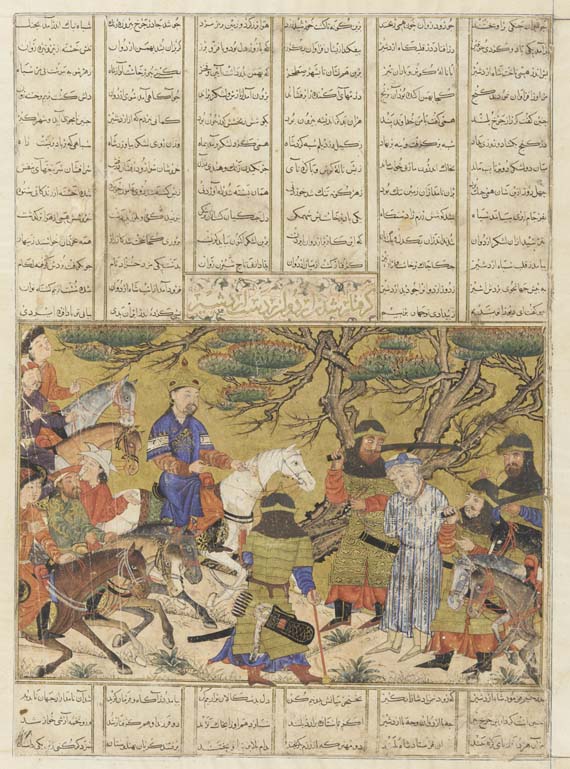 Ardashir Captures Ardavan, from a Shahnama (Book of Kings) by Firdawsi (d.1020) Tabriz, Iran. Il-Khanid period, circa 1330-1336. Opaque watercolor, ink and gold on paper / Purchase S1986.103, Smithsonian Unrestricted Trust Funds, Smithsonian Collections Acquisition Program, and Dr. Arthur M. Sackler
Ardashir Captures Ardavan, from a Shahnama (Book of Kings) by Firdawsi (d.1020) Tabriz, Iran. Il-Khanid period, circa 1330-1336. Opaque watercolor, ink and gold on paper / Purchase S1986.103, Smithsonian Unrestricted Trust Funds, Smithsonian Collections Acquisition Program, and Dr. Arthur M. Sackler
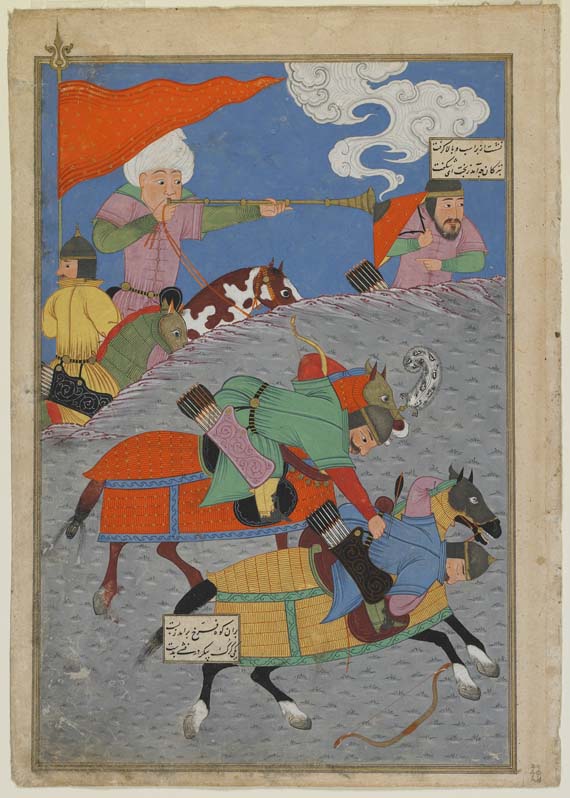 Battle Between Zangaand Awkhast, from a Shahnama (Book of Kings) by Firdawsi (d.1020), Gilan, Iran. Turkoman period, 1493-1494. Opaque watercolor, ink and gold on paper / Purchase S1986.176a, Smithsonian Unrestricted Trust Funds, Smithsonian Collections Acquisition Program, and Dr. Arthur M. Sackler
Battle Between Zangaand Awkhast, from a Shahnama (Book of Kings) by Firdawsi (d.1020), Gilan, Iran. Turkoman period, 1493-1494. Opaque watercolor, ink and gold on paper / Purchase S1986.176a, Smithsonian Unrestricted Trust Funds, Smithsonian Collections Acquisition Program, and Dr. Arthur M. Sackler
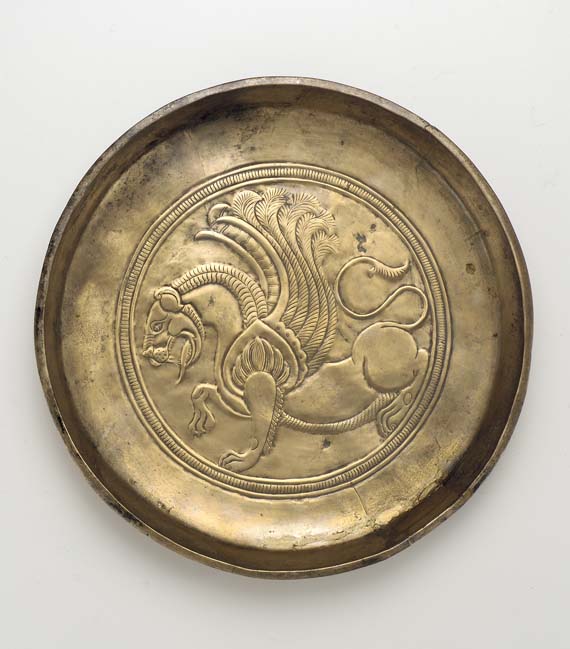 Plate, Iran. Sasanian period, 7th century. Bronze / Gift of Arthur M. Sackler, S1987.108
Plate, Iran. Sasanian period, 7th century. Bronze / Gift of Arthur M. Sackler, S1987.108
 Inscribed Ewer with Female Figures, Iran. Sasanian period, 6th-7th century. Silver and gilt / Gift of Arthur M. Sackler, S1987.117
Inscribed Ewer with Female Figures, Iran. Sasanian period, 6th-7th century. Silver and gilt / Gift of Arthur M. Sackler, S1987.117
All images © Copyright Freer Gallery of Art and Arthur M. Sackler Gallery, Smithsonian Institution
Comments
Add a comment